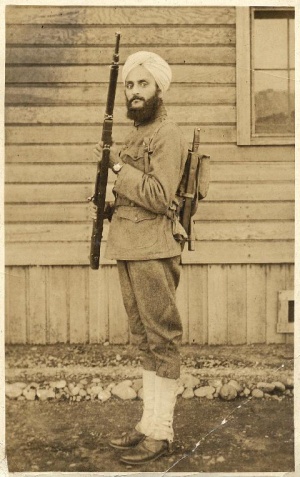
In the U.S. vs Bhagat Singh Thind, the U.S. Supreme court claimed that Thind, who was of Indian descent, was "caucasian" (India was previously defined as caucasian) but not "white" as it was understood in everyday speech. Therefore, Thind could not become a naturalized citizen. This case followed Ozawa vs. U.S. in which the court ruled that Ozawa, who was of Asian descent but had skin light enough to pass as white, could not be considered "white" because "white" meant "caucasian."
Several things happened as a result of this ruling. Firstly, the first person from India to become a citizen, Mr. A.K. Mozumdar, had his citizenship revoked following the court ruling. Hearing of this, Indians in both America and India began calling for an end to discrimination. Of course, it wasn't until years later that any progress was made, but the fact that another sizable group of people in the U.S. were marginalized right alongside blacks and east Asians cannot be ignored. This ruling served to swell the pool of discontented citizens who had settled in the U.S. but been denied not only their right to legal citizenship, but acceptance into society. This case, along with Ozawa. vs. US, served to start the long held tradition of the "golden man" and the "model minority." While most Asian subgroups were relegated to the bottom of the social hierarchy, as dregs of society (i.e. prostitutes, lepers, and opium addicts), there was yet one avenue for (some) success for an Asian immigrant. This option was assimilation. The "golden man" and "model minority" were products of the pressure many Asians felt to assimilate, so that they would not be marked or excluded. Many today claim that the model minority is "whitewashed" as if it is a travesty to besmirch ones' Asian heritage with whiteness. Oh, the irony! Just a century ago, this trait of being "whitewashed" was highly desired, for it meant that one was acceptable to white people. This allowed Asians access to the all important goals of legal citizenship and social acceptance. I find today's criticism of whitewashed Asians to be comforting, for it means that it is understood by the masses that there is room for difference. At the time of this case, in 1923, however, there was no room for difference - it was dangerous to be different. Difference drew the ire of a "civilized" white people who were actually quite bloodthirsty. If immigrants were anything it was perceptive - they kept their eyes open for the law and their ears peeled to the currents of society. No doubt those who witnessed lynchings of black people realized, with much fear, that they and blacks were the same to the lynchers. Perhaps then the most important result of this case was that, along with Ozawa v. U.S. and other similar cases, a few people began to fight for the right to be different. Eventually, this movement grew and grew, morphing into power social phenomena that changed the course of global politics forever.
-Jeremy Steinberg
No comments:
Post a Comment